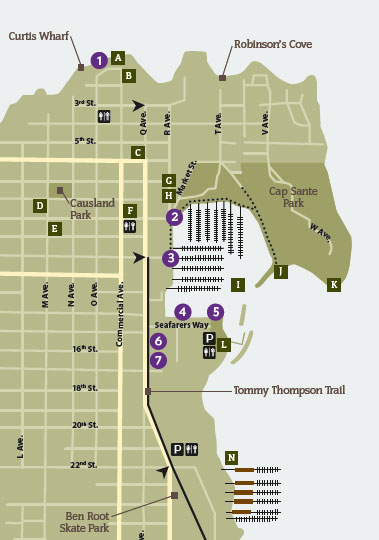Salish Sea: What's in a Name?
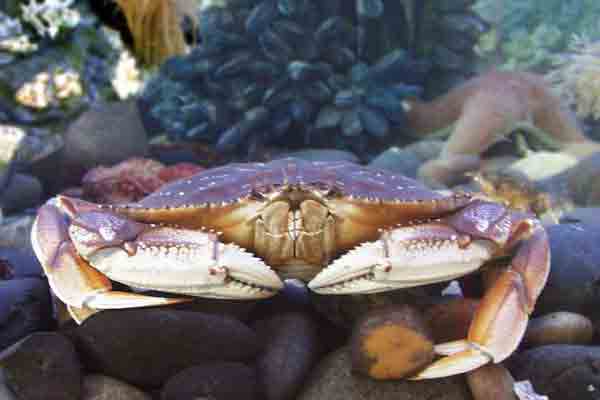 Fidalgo Bay is part of a larger body of water known as the Salish Sea. Abundant fresh water, unique tidal patterns, and shallow bays create one of the largest and most biologically diverse ecosystems with significant populations of birds, mammals, fish, and invertebrates.
Fidalgo Bay is part of a larger body of water known as the Salish Sea. Abundant fresh water, unique tidal patterns, and shallow bays create one of the largest and most biologically diverse ecosystems with significant populations of birds, mammals, fish, and invertebrates.


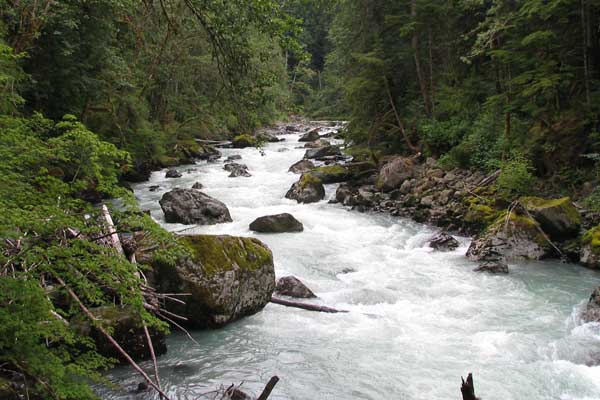 Stand quietly. Listen. Water trickling down the bank may have fallen as rain in the Anacortes Forest Lands. Following the contours of the land, the water works its way through its watershed into Fidalgo Bay.
Stand quietly. Listen. Water trickling down the bank may have fallen as rain in the Anacortes Forest Lands. Following the contours of the land, the water works its way through its watershed into Fidalgo Bay.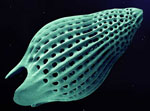 Fidalgo Island originated beneath the ocean as layers of the earth’s crust. Moving ocean plates transported the crust, thrust it against the continent, and eventually uplifted and eroded it. Such slices of uplifted oceanic crust—found at the edges of many continents—are called ophiolites.
Fidalgo Island originated beneath the ocean as layers of the earth’s crust. Moving ocean plates transported the crust, thrust it against the continent, and eventually uplifted and eroded it. Such slices of uplifted oceanic crust—found at the edges of many continents—are called ophiolites.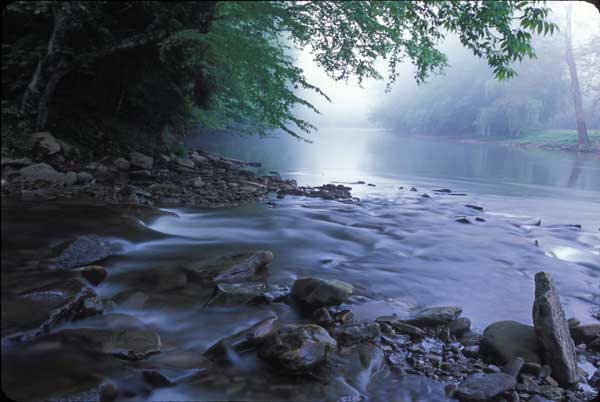 The shorelines of our bays, streams, lakes, and other bodies of water are an integral part of human experience—they also play a critical role in supporting the health of surrounding ecosystems.
The shorelines of our bays, streams, lakes, and other bodies of water are an integral part of human experience—they also play a critical role in supporting the health of surrounding ecosystems.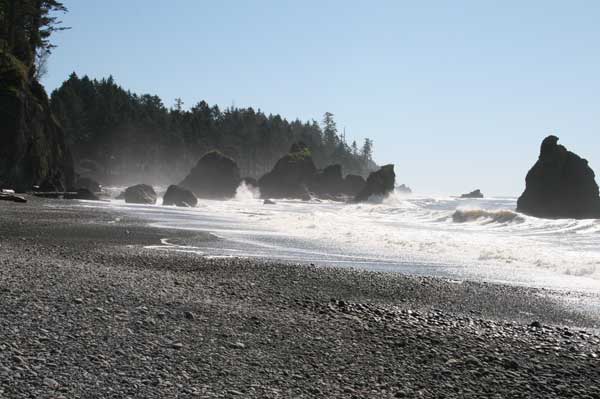 Water moves soil and rocks down coastal slopes toward the shore. There, incessant waves erode vulnerable shorelines, washing soils from bluffs and rivers to replenish adjacent beaches and build spits.
Water moves soil and rocks down coastal slopes toward the shore. There, incessant waves erode vulnerable shorelines, washing soils from bluffs and rivers to replenish adjacent beaches and build spits.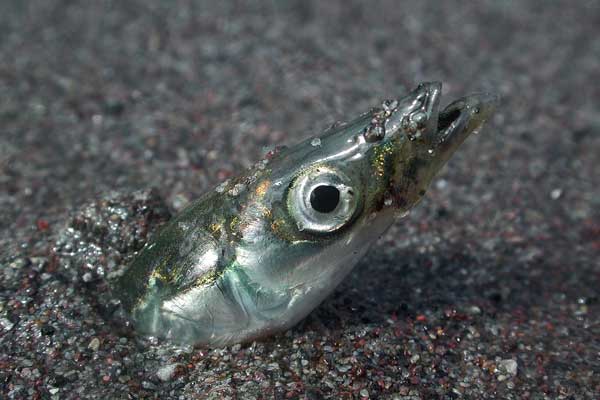 In Fidalgo Bay, forage fish lay their eggs year-round on beaches and in intertidal areas, a risk-prone space they must share with wild and domesticated animals, beachgoers, and increasing shoreline development.
In Fidalgo Bay, forage fish lay their eggs year-round on beaches and in intertidal areas, a risk-prone space they must share with wild and domesticated animals, beachgoers, and increasing shoreline development.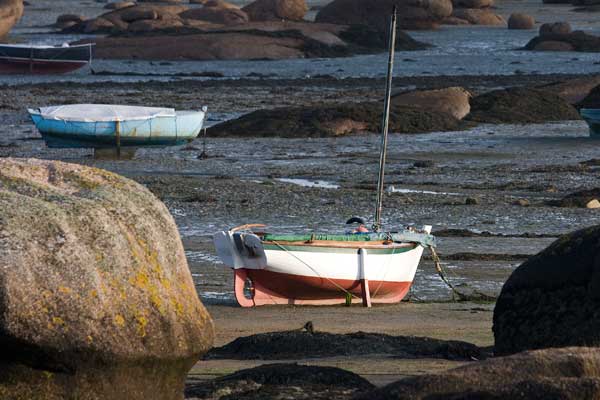 Our oceans are constantly on the move. The gravitational pull of the sun and the moon and rotation of the earth set in motion the circulation of the earth’s waters. Where and how these waters move is also driven by the interaction of wind, waves, tides, currents, and the contours of the shoreline and ocean floor.
Our oceans are constantly on the move. The gravitational pull of the sun and the moon and rotation of the earth set in motion the circulation of the earth’s waters. Where and how these waters move is also driven by the interaction of wind, waves, tides, currents, and the contours of the shoreline and ocean floor.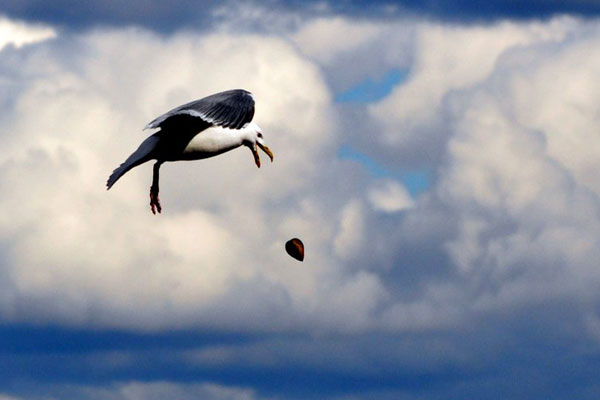 The waters, tidelands, marshes, and fields around you offer rich and productive habitats, nurseries, and sources of food for resident and part-time bird populations. Fidalgo Bay boasts some 200 species of birds. Many reside here year round. Some stay for a season.
The waters, tidelands, marshes, and fields around you offer rich and productive habitats, nurseries, and sources of food for resident and part-time bird populations. Fidalgo Bay boasts some 200 species of birds. Many reside here year round. Some stay for a season.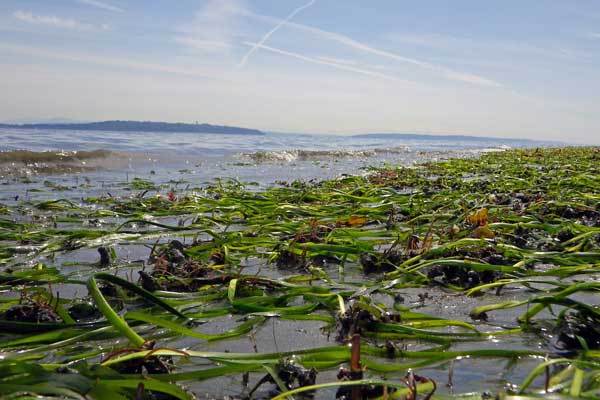 With little fanfare, ribbon-like eelgrass creates some of the most productive coastal habitats in the world. Nutrient-rich local mudflats in Fidalgo Bay, Samish Bay, and Padilla Bay offer ideal eelgrass environments.
With little fanfare, ribbon-like eelgrass creates some of the most productive coastal habitats in the world. Nutrient-rich local mudflats in Fidalgo Bay, Samish Bay, and Padilla Bay offer ideal eelgrass environments.